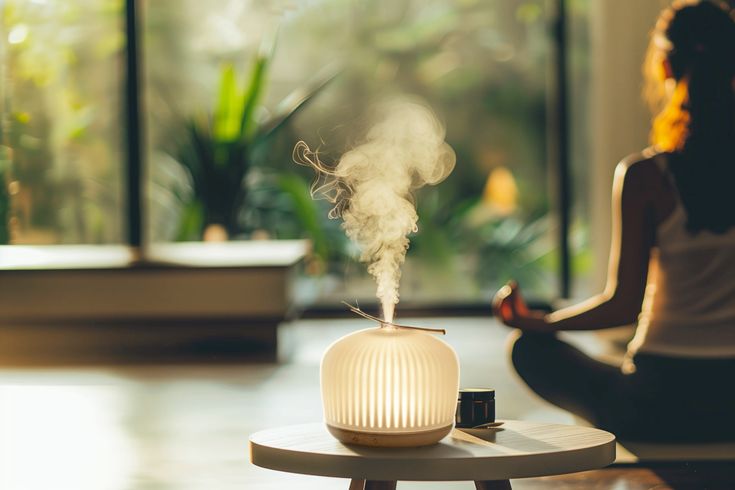Essential oil diffusers have become an essential part of modern wellness routines, offering an easy and effective way to enjoy the benefits of aromatherapy. Whether you seek relaxation, stress relief, or air purification, diffusing essential oils can help create a calming and therapeutic environment. In this guide, we’ll explore the different types of essential oil diffusers, their benefits, and how to choose the best one for your needs.
What is an Essential Oil Diffuser?
An essential oil diffuser is a device designed to disperse essential oils into the air, allowing you to inhale their therapeutic properties. These devices help distribute the natural aroma and benefits of essential oils throughout your home or workspace, enhancing mood, improving health, and purifying the air.
Types of Essential Oil Diffusers
There are several types of essential oil diffusers available, each with unique mechanisms for dispersing oils. Understanding their differences can help you choose the right one for your needs.
1. Ultrasonic Diffusers
Ultrasonic diffusers use water and electronic vibrations to break down essential oils into a fine mist, which is then released into the air. They act as both a humidifier and a diffuser, making them ideal for dry environments.
Pros:
-
Adds moisture to the air
-
Quiet operation
-
Safe for continuous use
Cons:
-
Requires regular cleaning
-
Dilutes oils with water, reducing concentration
2. Nebulizing Diffusers
Nebulizing diffusers use a pressurized air stream to break essential oils into tiny particles without using heat or water. This results in a more potent and concentrated aroma.
Pros:
-
No water required
-
Delivers pure essential oil benefits
-
Covers larger spaces effectively
Cons:
-
Uses oils quickly
-
Can be more expensive
-
Louder than ultrasonic diffusers
3. Evaporative Diffusers
These diffusers use airflow to evaporate essential oils and disperse them into the air. They can be as simple as a reed diffuser or a fan-powered device.
Pros:
-
Simple and low-maintenance
-
No electricity needed (in the case of reed diffusers)
Cons:
-
Less effective for therapeutic benefits
-
Scent fades quickly
4. Heat Diffusers
Heat diffusers use warmth to help essential oils evaporate and disperse their aroma. They include candle-based diffusers and electric heat diffusers.
Pros:
-
Silent operation
-
Affordable
Cons:
-
Can alter the chemical composition of oils
-
Less effective for medicinal benefits
Benefits of Using an Essential Oil Diffuser
1. Promotes Relaxation and Stress Relief
Certain essential oils, such as lavender, chamomile, and ylang-ylang, have calming properties that help reduce stress and anxiety. Diffusing these oils can create a serene atmosphere, perfect for unwinding after a long day.
2. Improves Sleep Quality
Essential oils like lavender and sandalwood can promote better sleep by creating a soothing environment. Diffusing these oils in your bedroom can help you relax and improve sleep patterns.
3. Boosts Mood and Energy Levels
Citrus oils such as lemon, orange, and grapefruit have uplifting properties that can enhance mood and boost energy levels. Diffusing these oils in the morning can help you start the day with a positive mindset.
4. Purifies the Air
Essential oils like eucalyptus, tea tree, and peppermint have antimicrobial properties that help cleanse the air by eliminating bacteria and mold. A diffuser can act as a natural air purifier, keeping your home fresh and clean.
5. Supports Respiratory Health
For those suffering from congestion or allergies, diffusing eucalyptus or peppermint oil can help open airways and improve breathing. These oils work as natural decongestants, making them beneficial for respiratory health.
6. Repels Insects
Certain essential oils, including citronella, lemongrass, and peppermint, act as natural insect repellents. Using a diffuser can help keep bugs away without the need for chemical sprays.
7. Enhances Focus and Concentration
Essential oils such as rosemary, peppermint, and frankincense can improve cognitive function, making them ideal for workspaces and study areas. Diffusing these oils can boost productivity and mental clarity.
How to Choose the Right Essential Oil Diffuser
When selecting an essential oil diffuser, consider the following factors:
-
Room Size: Larger rooms require more powerful diffusers like nebulizers, while smaller spaces can benefit from ultrasonic or evaporative diffusers.
-
Duration of Use: If you need continuous diffusion, opt for a diffuser with a large water tank or adjustable timer settings.
-
Maintenance Requirements: Some diffusers, like ultrasonic and nebulizing types, require regular cleaning to prevent residue buildup.
-
Noise Level: If you prefer a quiet atmosphere, an ultrasonic or heat diffuser may be the best choice.
Tips for Using Essential Oil Diffusers Effectively
-
Use Pure Essential Oils: Always opt for 100% pure, high-quality essential oils to maximize benefits.
-
Follow Recommended Usage Guidelines: Overuse of essential oils can lead to sensitivities, so use them in moderation.
-
Clean Your Diffuser Regularly: Prevent buildup and ensure optimal performance by cleaning your diffuser after every few uses.
-
Experiment with Blends: Mix different essential oils to create customized aromas for relaxation, focus, or energy boosts.
Conclusion
Essential oil diffusers offer a natural and effective way to enhance well-being, purify the air, and create a relaxing atmosphere. Whether you want to reduce stress, improve sleep, or simply enjoy the pleasant aroma of essential oils, choosing the right diffuser can make all the difference. By understanding the different types of diffusers and their benefits, you can make an informed decision and incorporate aromatherapy into your daily routine for a healthier and more balanced lifestyle.
Do you have a favorite essential oil or diffuser? Share your experience in the comments below!

